It was Mark Twain who eruditely said something like: “It’s a difference of opinion which makes a horse race.” That mobius strip of an assertion draws people from all strata of society to the horse track. Some come simply to watch the magnificent horses sprint around an oval track, some come lured by the possibility of winning the mortgage on a parlay of the perfectly placed superfecta wager. Some come to be seen, a faction of distinction, to be sure. Some come to watch those who wish to be seen.
I guess I fall into the latter category. On a chilly Sunday in December I ended up at the Portland Meadows for “Oregon Championship Day.” The horseracing season in Oregon runs from the middle of October to the middle of March. I’m no authority, but if I were a horse, I’m not so sure how much I would enjoy sprinting in the neighborhood of a mile through the miserable chill and the sort of slop an Oregon fall and winter might dump on a racetrack. It seems like those months would be better spent down at sunny Santa Anita. If I were a horse, I certainly wouldn’t mind galloping around a track every once in a while with some hobbit on my back under the Oregon June sun. No problem.
But hey, I’m no aficionado. My guess is the horseracing associations around the country reserve the spring and summer seasons for the important races: the Derby, the Belmont Stakes, the Preakness and the Jockey Club Gold Cup, etc. I don’t think a lot of attention is paid to the racing stables of the Northwest. So, if you want to see horse races in Portland, you better bundle up.
I was in attendance only because my girlfriend, Lesley, a true horse lover, was researching an article she was writing about women jockeys, and there just happen to be a couple of pretty good ones who ride in Portland during the season. I don’t necessarily share Lesley’s passion for horses. Ever since I was five, when one bit me on the leg attempting to wrest sugar cubes from my pants pocket, I have had a primordial fear of the equine species. And, like dogs, horses can smell or intuit or suss out your fear of them. They’re pretty smart.
I know this to be true, because when I was a kid, my family used to head down to the Applegate Valley in Southern Oregon to visit friends, who had a modest farm—a couple dozen cows and maybe ten horses. The rest of my family was always hot to trot on those horses, ready to ride up into the hills, the dry summer wind blowing warm balsam in their faces and all that horseshit. I was not so enthusiastic. For one thing, it always seemed as if the horses were flipping coins to see who would get to take me for a ride. Apparently, I was an obvious mark.
Our friends knew of my issues with horses and always proceeded to set me up with Feathers or Buttermilk: some passive horse whose most aggressive gestures so far had been whipping at flies with a practiced tail. But, by God, put me on the back of Buttermilk and all of a sudden she thinks she can do six furlongs in a minute flat.
The outcome of these episodes was invariably the same. Buttermilk or Feathers or Cloudy, or whoever, would throw me. From my experience, getting thrown from a horse is no fun at all. I find it comparable to playing defensive end in football and being afforded the grand opportunity to knock down a pulling-guard and two running backs on an end-around.
Horses were never a big part of my life. I went to the dog races once, with Lew Jones and a mutual friend—with the express intent of gambling. Our buddy knew the dogs and was reasonably certain that we could come out ahead. I think we bet, like, two or three bucks on each race. That was twenty or thirty bucks. We were broke back then. Just like now. We did end up coming out ahead, a little bit, enough so that we paid for all our bets and beer—which was a considerable tab on a warm spring afternoon. I had a hangover for three days, and eight dollars, I think.
But I didn’t accompany Lesley to the Oregon Championship to wager. I’m too easily distracted by number combinations like 1-4-5, or by prime numbers, a Fibonacci sequence, birthdates or phone numbers, to be able to satisfactorily bet on a horse race with any real effectiveness. As Mark Twain implied, betting on the horses is no easy matter, especially at the Portland Meadows level. You’ve got to get to know the horses and the trainers and the jockeys and the track. And then show up every Monday and Wednesday for six months for the actual races. It’s a science. And then there’s always the Heisenberg Uncertainty Principle. Not really. Maybe.
No, I went to the horse races because I was curious. I suspect it is this unbridled curiosity of mine that leads me to write arcanities such as this uninformed blather. If you’ve learned something (or think you have) or have seen something (voila!)—(apparently) unique or unusual, it is only human nature to wish to expound upon that discovery for as long as the human attention span will allow (140 characters). In that regard I must admit that I may have already overstayed my welcome. But I’m not finished yet. Say what you will.
So, there we were at the Portland Meadows at 11AM on a cold Sunday, grey cumulus clouds dappling the sky. The Meadows are located in a non-descript light industrial part of town, near Delta Park just east of I-5. The pleasant surprises began almost as soon as we walked through the doors. It’s certainly not the environs, which resemble most the prototypical ‘60s high school football stadium. But admission is free! I guess they figure they’re going to get your money on bets and beer, they don’t need to saddle you with another five or ten bucks just to get in.
We entered the building, and, it was weird. There were hip representatives from the illustrious Voodoo Doughnuts franchises providing complimentary confections, perhaps tamed down a tad for the non-sequitur occasion. Ristretto Roasters served complimentary cups of coffee as well. An unexpected festive atmosphere hung in the air. I think that’s what it was.
The layout of the premises was rudimentary. To the right, outside swinging glass doors was the paddock where the nearly eighty horses incrementally awaited, in groups, their turns to run. A rich variety of humanity encircled the fenced area. Some had the knowing look and vague manifestation of the gambler’s breed. Others appeared to be horse guys and their horse families. As might be expected, there were a lot of horse girls. Girls who love horses. They spring abundant.
From a distance, the horse girls all looked alike. As a fashion statement for horse girls, aged 12 to 25ish, the preferred mode of attire appeared to be a dark hoodie sweatshirt and those jeans that have the ornate embroidery all over the back pockets. I always wondered who bought those. I’d seen them advertised in Fred Meyer flyers and stuff. I figured it was probably mostly junior high girls. But after my day at the races, I am convinced those jeans are the stylistic preferred choice of a large demographic swath of horse girls. I did not further pursue the subject to ascertain as to why this phenomenon existed. Just one of those mysteries left to the ages.
Next to the paddock were the stairs up to the grandstands. Directly in front of us was a bar with a whole passel of tables strewn about for ostensible patrons whom at that time of the day had yet to arrive. To the left, beyond the coffee dispensary table was the inner sanctum. That was where the real gamblers hung out. They didn’t come to the Meadows to view the races. This was obvious from the fact that all the benches in the auditorium faced away from the track. There was an enormous bank of television monitors stretched out across the room, suspended about twelve or fifteen feet in the air.
On the array of television screens were broadcast the feeds of horse races from all over the known universe (including, coincidentally, the Meadows’ races occurring just out back), all football games, basketball games, jai alai games, rugby and soccer matches, Keno numbers and stuff that I haven’t the slightest idea what it was, but it was contentious, therefore someone among the rabidly comatose crowd of onlookers most certainly had some money on the outcome.
Behind the Church of Wager was a vast expanse facing the track where disinterested people sat amidst a sea of tables waiting for something—though it was entirely unclear as to what. They didn’t seem to be particularly aware of those herds of horses stampeding just beyond the concourse outside. Most of them just sat talking, watching various football games being broadcast on the in-house feed, not doing much of anything. I considered that maybe some of the people were, like myself, new to the horse racing game and didn’t realize there was live entertainment outside.
We found seats in the stands upstairs where every other space was afforded a small television (a necessity for viewing the races in their entirety). And while Lesley ran off to talk to the jocks and arrange for further interviews, I checked out the racing program and surveyed the track.
First off, it’s a mile around the damn thing. The near side of the oval seems far enough away, probably a couple hundred yards. But the distant arc is way the hell down there, maybe five or six hundred yards. At that distance, to the unaided eye, the horses look like blurry, dark smudges gushing forth, like an onrushing flood of muddy water steeds.
The view in the stands was greatly impeded by the elaborate metal framework of windows that adequately protected from random inclemencies of the elements, but in a lot of ways rendered pointless the experience of witnessing the entire race (or most of it) from a decent vantage point. Just the same, one could catch a reasonable view of the homestretch, if positioned properly up in the stands. We had properly positioned ourselves.
There was much to see. A lot going on. Hustle and bustle. Many, many horse girls and hay boys, mostly wandered around, or congregated in pockets. Next to our table, a party of older adults was gathered, having drinks and munching on food from the grill, occasionally placing bets at one of the self-service terminals. For them, the afternoon seemed to be a sort of low-key party. I was never able to tell if any of them won or lost any money. They just seemed to be having a good time.
From my vantage point the aforementioned grill, located behind us in the “clubhouse,” was turning out some nicely prepared sandwiches and baskets. The 15 piece breaded shrimp basket for $7.25, looked especially appealing, as waitresses whisked by with orders for various tables. There’s even a garden burger (!) and a chef’s salad on the menu. The food is nothing astonishing, but it’s a good value for the modest prices.
But the food is just gravy on the biscuit. The real meat of the matter is horseflesh. In the case of the horses trotting out onto the track, those were spectacular specimens. In their brightly striped silk outfits, the jockeys looked like ornately decorated marshmallows on the backs of those massive animals. Here again, Twain’s “difference of opinion” weighs heavily in the equation. Because it’s hard to understand why a horse would even bother going through with the whole race thing unless it kind of liked it.
The bugler guy in the red uniform with the long horn knocked out the familiar call to post, wrapping it up with a nice Christmas song reference at the end. Sweet. At the sound of the clarion call, Lesley reappeared, just in time for the first races, a couple of preliminary 350-yard quarter horse dashes whose purpose seemed to be mostly to get the people strolling around the grounds to sit down and pay attention, which they more or less did.
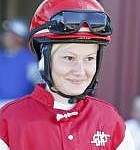
The two women Lesley was interviewing were rated as among the Top Five in both the Thoroughbred and Quarter Horse jockey standings. Deborah Hoonan-Trujillo served as the wizened veteran, shrewd to the techniques of the sport. In the role of impressionable rookie, was Eliska Kubinova—recently arrived from the Czech Republic—a tiny, young blond with bright features and an impish smile.
But, in a betrayal of her seeming delicate ingenuousness, she currently ranks as the number two jock in both breed types. She’s skilled and tough in her own right. In fact, it’s noteworthy that in only one race out of the nine in which they competed did one or both of the women jockeys not finish in the money.
After the sprints, the remaining eight races were a mix of distances. Several were six furlongs—about ¾ of a mile—and the rest were in the neighborhood of a mile, give or take. Most of the horses participating in those longer races came in at well under two minutes. Isn’t that, like, thirty miles an hour? I think it is. Yikes!
It’s gotta be a real trip for the poor horses. First they’re stuffed into those weird starting gate contraptions. Some of them are so startled when those gates slam open and the bell rings, that they practically fall sideways out of the chute. The jockeys seem aware of that propensity, and redirect the startled creatures into more or less the proper direction. A snap of the rein, a jab of the heels and a flick of the whip, and off they go. It’s pretty amazing to watch.
Coming down the homestretch, some of the horses exhibited an unexpected intensity. They were really competitive. Sure, the jockeys were doing their best to encourage their charges, imparting their own motivations into the mix. But there were horses that clearly wanted to win. They wanted to win bad. You could see it.
I always thought horses just wanted sugar cubes. It never occurred to me they had that whole horse eat horse instinct thing going on. Thought provoking. Horses radiate a handsome, dignified pride that’s strangely disquieting, though decidedly warranted. God knows I respect the beasts.
Once a race had finished and the brief ceremony for the winner that followed was wrapped up, there was about a half hour of down time. That was when the waitresses fired into warp drive, filling orders from the grill. In addition, people began to wander, to migrate, in search of something. Hard to say what that might be at a horse track, besides money. But I’m naïve to these things.
Of special note, and actually the inspiration behind this whole fiasco, was a contingent of eight or ten well-turned hipsters who were treating the Oregon Championship as if it were the Kentucky Derby—dressed in their finest vintage finds. I was charmed by the sense of Felini-esque grandeur they lent to the festivities, as they paraded by from time to time. They seemed coolly bemused at the attention they were receiving as they tramped up to the second level to hit the “clubhouse,” and back on down to the track level, when the action started winding up again.
I thought what they were doing was cool. I would suspect that their appearance was special to the “event,” and that they do not attend every meet on the schedule. I could be wrong. Perhaps there was a Voodoo Donuts connection. Who knows? I liked the direction they were heading. Good stuff. I approve. C’est si bon!
It got me to thinking that the Meadows could pump new blood into the place by featuring rock bands in the “clubhouse,” on some nights. Maybe they don’t want new blood at the track and don’t want a bunch of broke hipsters wandering around trying to bum enough money for a schooner of PBR. I suppose they know their clientele better than I. Just a thought.
Lesley went back down to the jockey’s dressing room to interview her subjects during the 9th race, the only one in which neither was riding. After about twenty minutes or so, she returned. We went downstairs and outside to the concourse to stand at the finish line for the 10th race.
It was incredibly impressive to see those determined horses hurtling toward us down the home stretch, the muffled rumble of their hooves moaning the loam. Down there at ground level, you get a definitive idea of what’s going on, how much, uh, sheer horsepower is involved. It’s an awe-inspiring display of pure living energy.
I must say that attending the horse races at the Portland Meadows was far more enjoyable than I had anticipated. It’s possible to get many hours (four in our case) of very unusual fun entertainment for absolutely free—if you’re really on a budget. But take $20 to bet and another $20 for dinner and a coupla beers and yee-haw, pardner, you’re ridin’ purty high in the saddle.


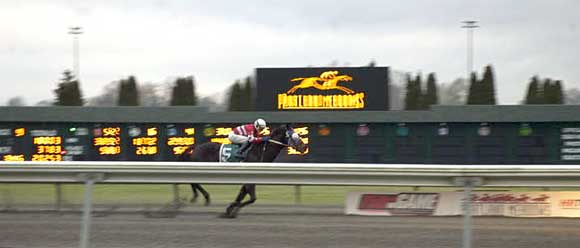
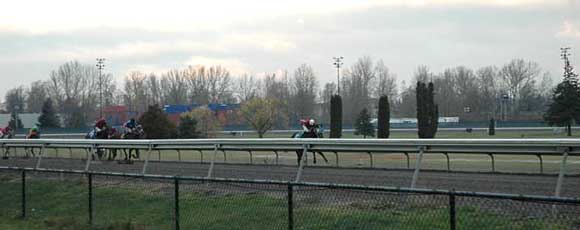
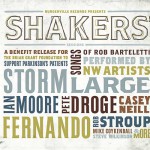
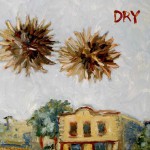
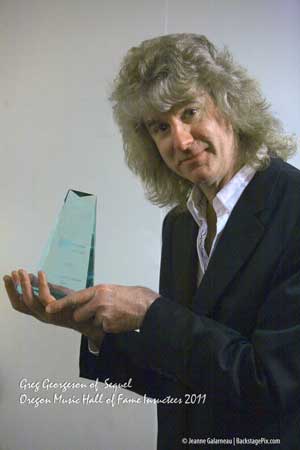

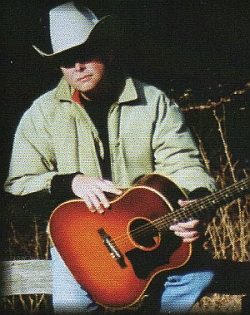
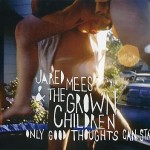
 The King is Dead
The King is Dead A New Kind of House (EP)
A New Kind of House (EP)